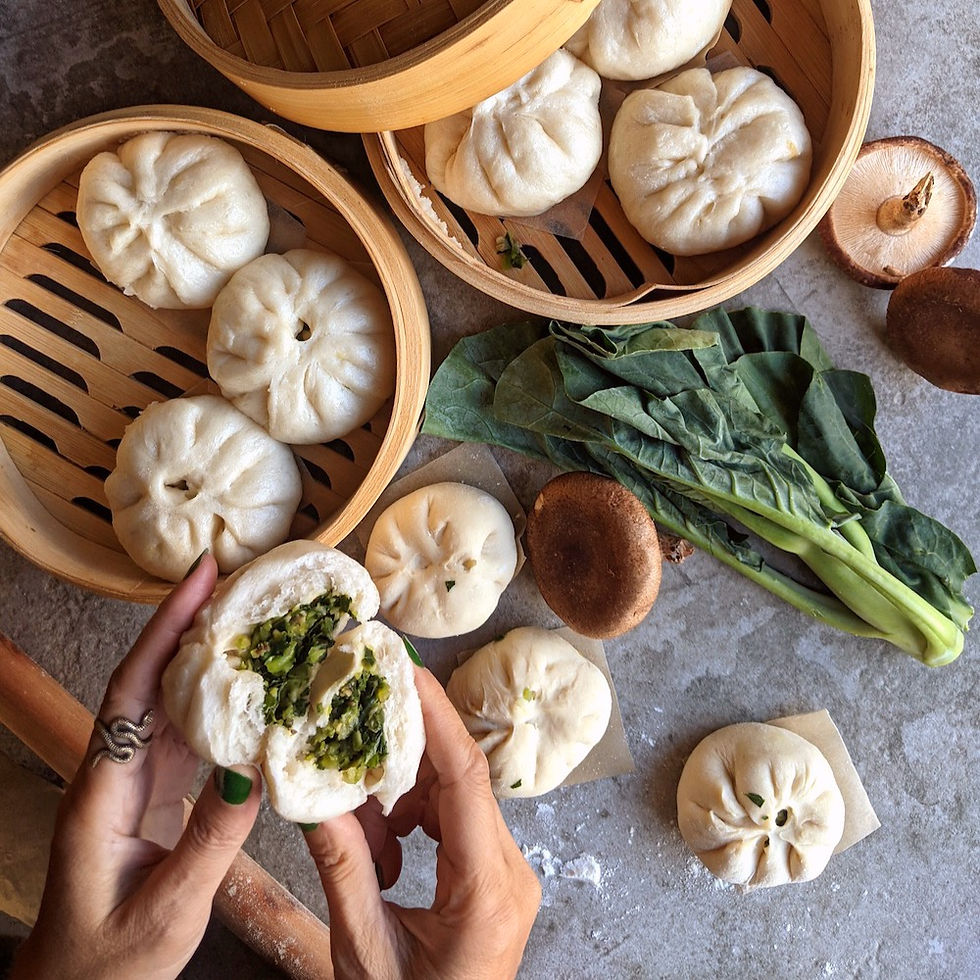
dragon boat festival joong
Every year on the fifth day of the fifth month of the lunar calendar (this year it falls on June 10, 2024), the Dragon Boat Festival celebrates the life of Qu Yuan (c. 340–278 BCE), a poet and scholar who was cast out by his enemies. While in exile, he learned of the defeat of his ruling state by the Qin dynasty.
In despair, he took his own life by throwing himself into the river. Local villagers rowed boats in search of Qu Yuan’s body, beating loud drums to keep the evil spirits away, and threw rice into the water to appease the river dragon gods and divert the fish from eating his body.
Not recovering the beloved poet's body, the spirit of Qu Yuan appeared before his friends and asked them to wrap their rice into three-cornered silk packages to ward off the dragon. Over time, these parcels, known as Joong 糭 or Zongzi 粽子, are wrapped in bamboo leaves and are enjoyed during the Dragon Boat Festival.
Joong can be made with a wide variety of savory and sweet fillings throughout China. This savory version is a plant-forward version of traditional southern Cantonese variation - substituting the porkbelly with taro and salted egg with an umami sweet potato mash. Make sure to soak the bamboo leaves and rice overnight and prepare these parcels when you have a good amount of time.
ingredients
MAKES 12 PARCELS
36 bamboo leaves
For the rice:
4 cups [880 g] glutinous rice
1.5 tsp salt
2 Tbsp neutral or refined coconut oil
For the filling:
1/2 cup peanuts (preferably Chinese peanuts) boiled for 5 minutes and drained
6 oz diced king oyster mushrooms stir-fried with 2 Tbsp neutral oil, 1 tsp five spice, 1/2 tsp smoked paprika, 1/2 tsp salt, 1/2 tsp sugar, and 1/4 tsp red yeast rice powder (for color)
1 cup mashed sweet potato with 2 Tbsp nutritional yeast, 1 Tbsp coconut oil, and 3/4 tsp salt
3/4 lb taro, peeled and cut into 1/2" dice
3 Tbsp woodear mushrooms, soaked in hot water for 15 minutes, drained and finely chopped
2 Tbsp neutral or refined coconut oil
1 Tbsp Chinese cooking wine
1 Tbsp dark soy sauce
1 Tbsp blackstrap molasses
1 tsp dark brown sugar
1/2 tsp smoked paprika
1/2 tsp salt
method
Prepare the bamboo leaves: In a large pot of water, soak the bam-boo leaves overnight. You can weigh them down with a dish to keep them from fl oating to the top.
In the morning, bring the pot of leaves to a boil over high heat. After 10 minutes, remove the leaves from the pot, wiping them clean with a dishcloth. Trim the hard stem of the leaves and discard the water.
Make the rice: In a large bowl, wash and rinse the rice twice and soak it overnight in plenty of water. Drain the rice in a fine-mesh sieve, then place it back in the bowl and mix in the salt and oil.
Make the filling: Prepare the peanuts, king oyster mushrooms, and sweet potato mash as listed above. In a wok or medium-sized frying pan, heat the oil on high heat. Stir-fry the taro for 2 to 3 minutes, add the woodear mushrooms, cooking wine, soy sauce, molasses, sugar, smoked paprika, and salt and stir-fry for another 2 minutes. The taro will still be hard, which is fine because it will cook in the rice parcel.
Assemble the parcels: 1. Take two bamboo leaves with the smooth side of the leaves (not the side where the spine sticks out) facing you and overlap them to form a short, wide "X". 2. Using both hands to keep the leaves in place, make a fold at the cross section farthest away from you, bending the leaves toward each other to create a cone shape with a secure overlap. For a visual reference, the top of the cone should look like bunny ears with a mohawk. 3. Hold the cone securely like an ice cream cone and fill it with two tablespoons of the rice. 4. Add two tablespoonfuls of the taro-woodear mix, a teaspoon of the king oyster mushrooms, a dab of sweet potato mash, and a few boiled peanuts. 5. Place another spoonful or two of the rice on top to cover the filling. 6. 7. Place a third bamboo leaf across the front of the cone with a slight overlap to extend the height of the cone. 8. 9. 10. Starting with the front leaf you just added, close the parcel up as you would close the flaps on an upside-down pyramid- shaped box, folding over all the open edges (front, then left, then right, then back) and 11. overlapping them to securely wrap the rice. 12. Use kitchen twine to tie knots around all parts of the parcel to ensure the filling is tightly enclosed and to keep the leaves in place. Repeat with the remaining parcels.
Place all the joong in a large pot and fill it with cold water to cover. Put a dinner plate on top to keep them submerged. Bring the water to a boil over high heat, then turn the heat down to medium-low and cook at a low boil for 2 hours. Add more boiling water after one hour if necessary. Joong can be eaten warm or at room temperature. Unwrap the parcel, remove the leaves, and enjoy with a drizzle of dark soy sauce (optional).













































































